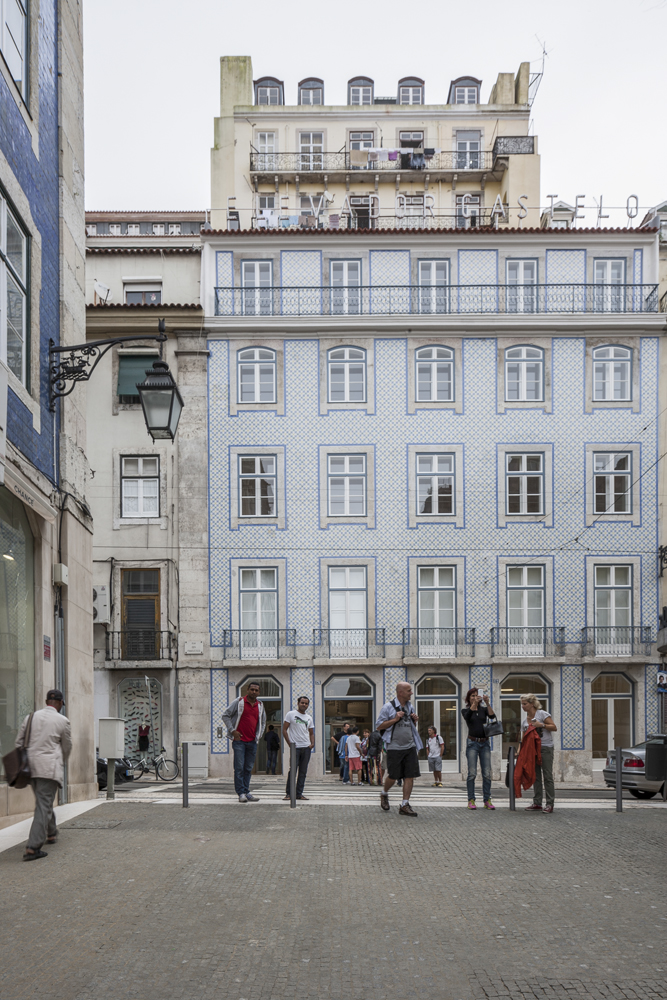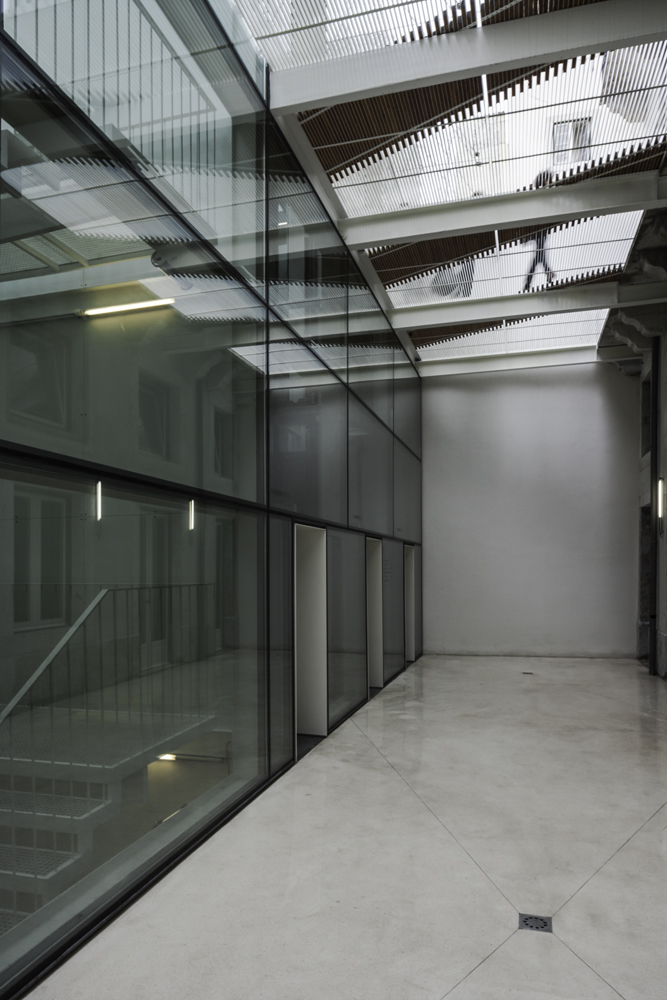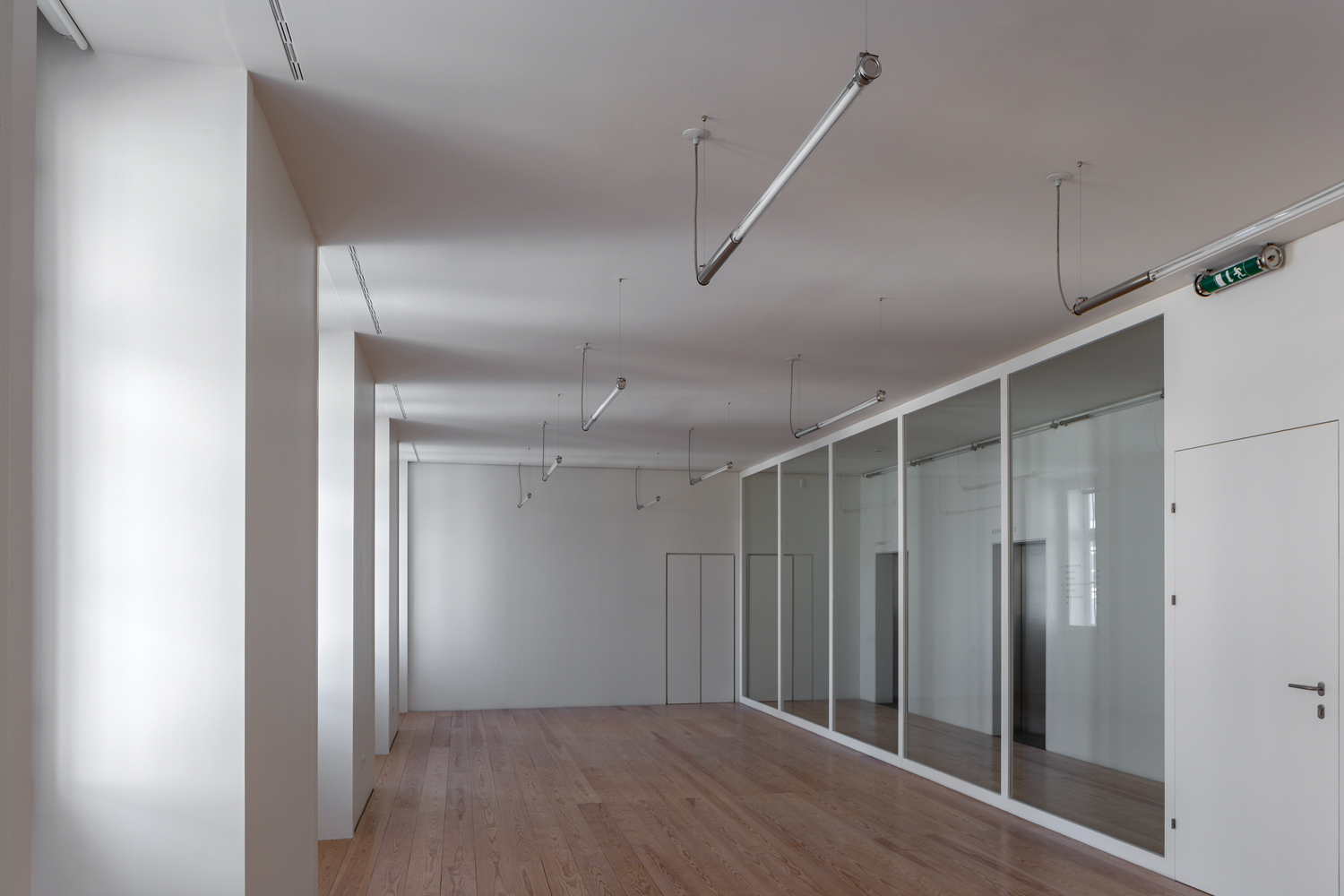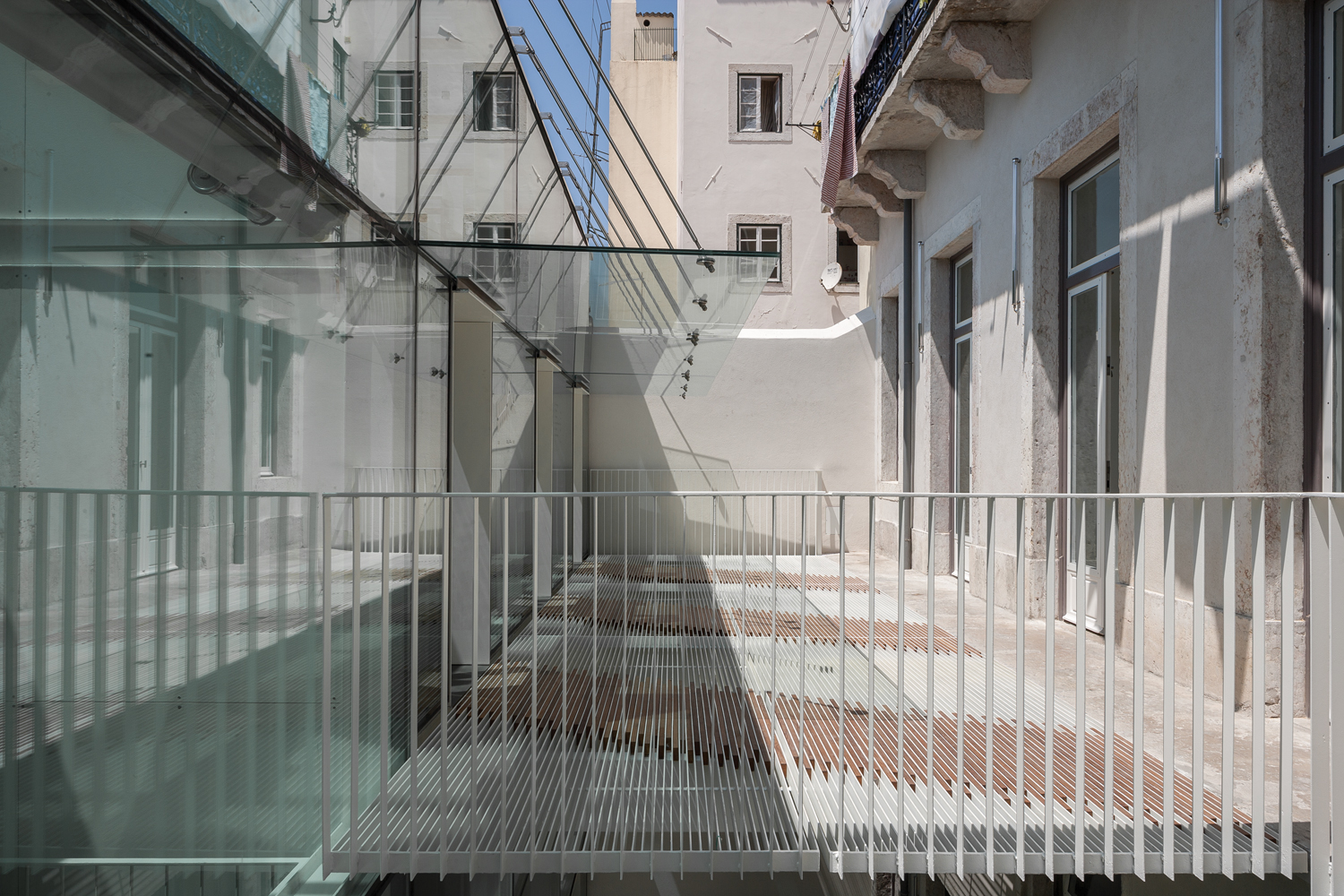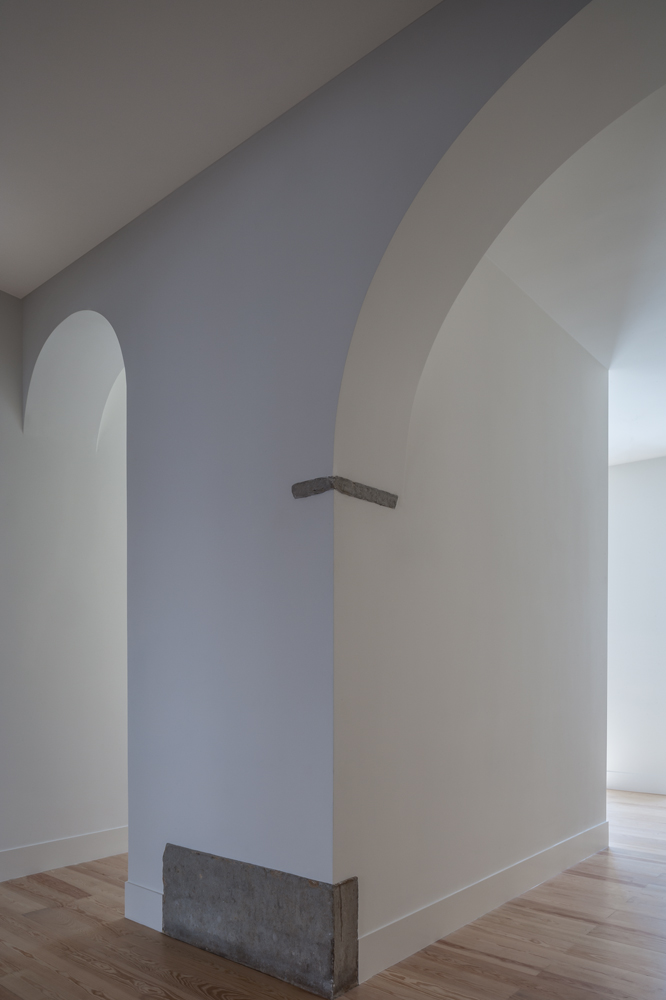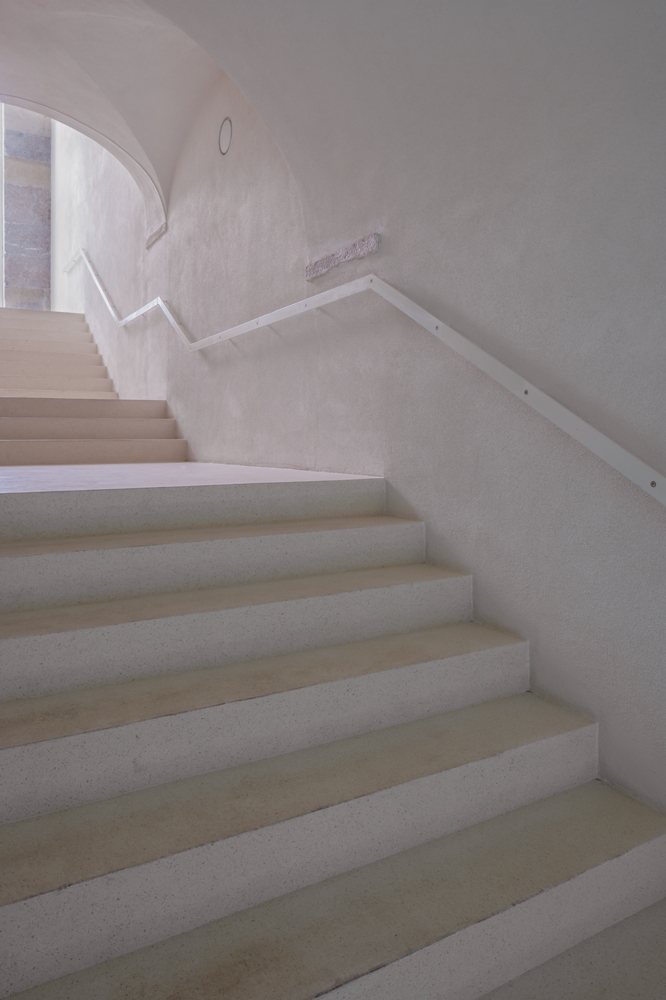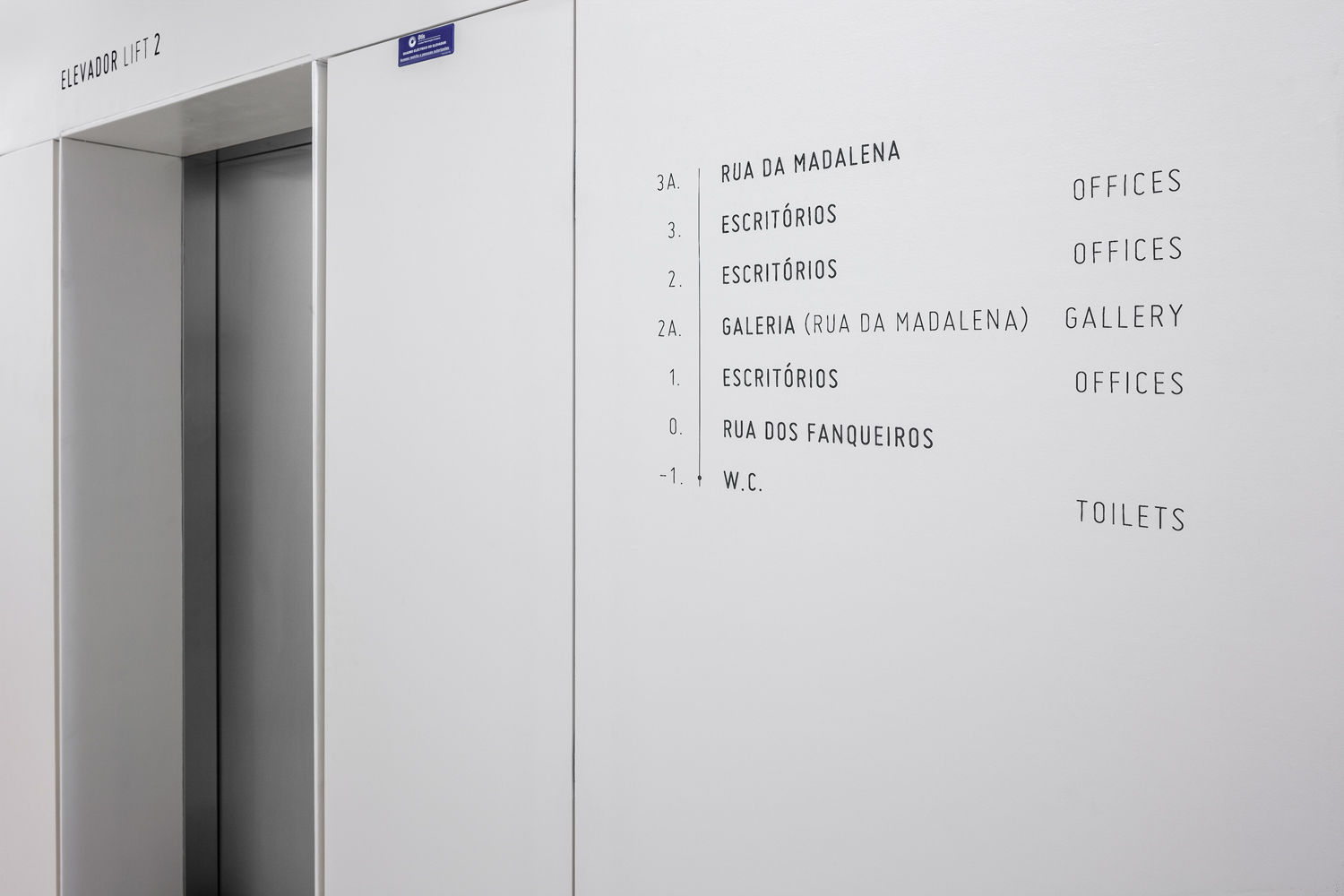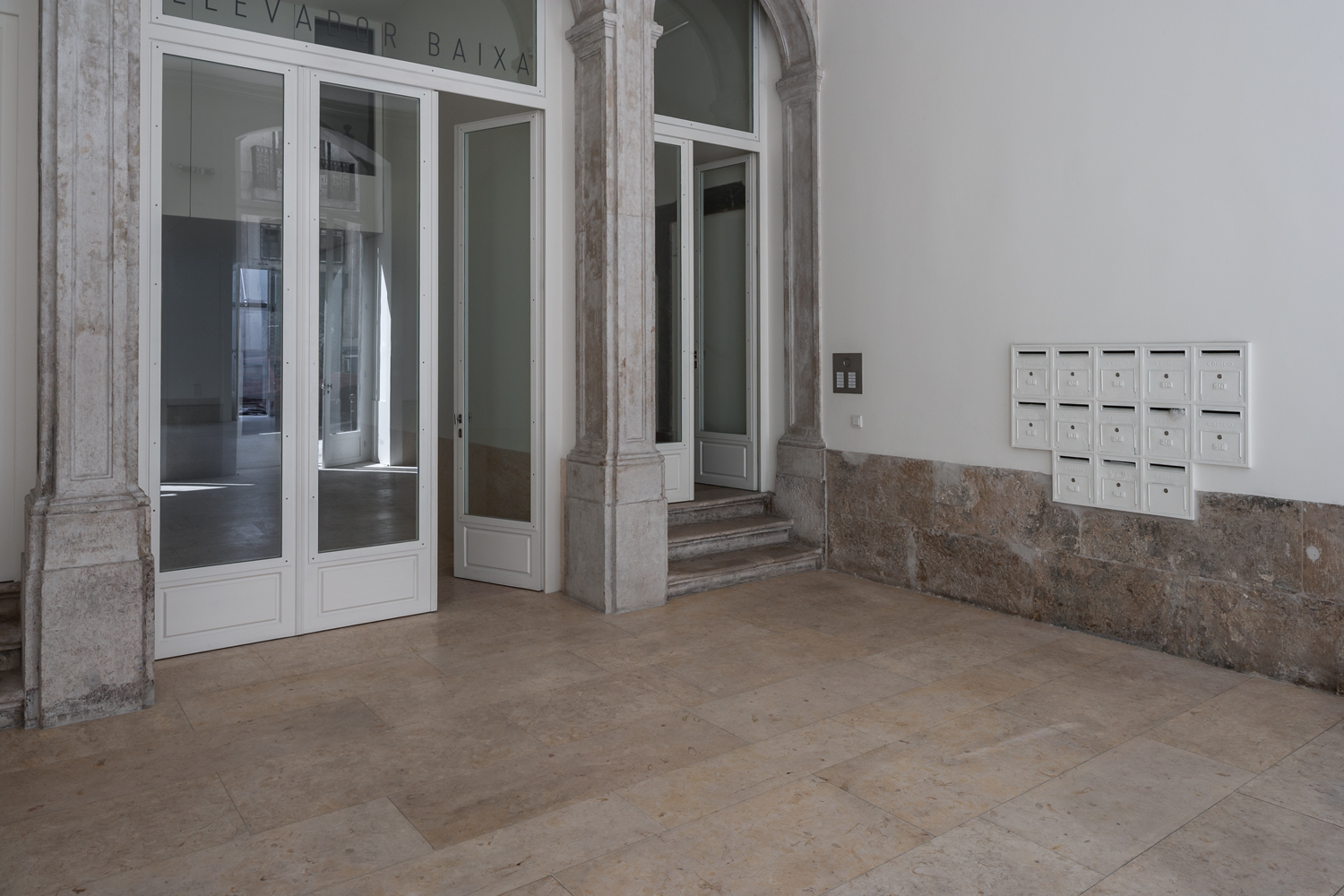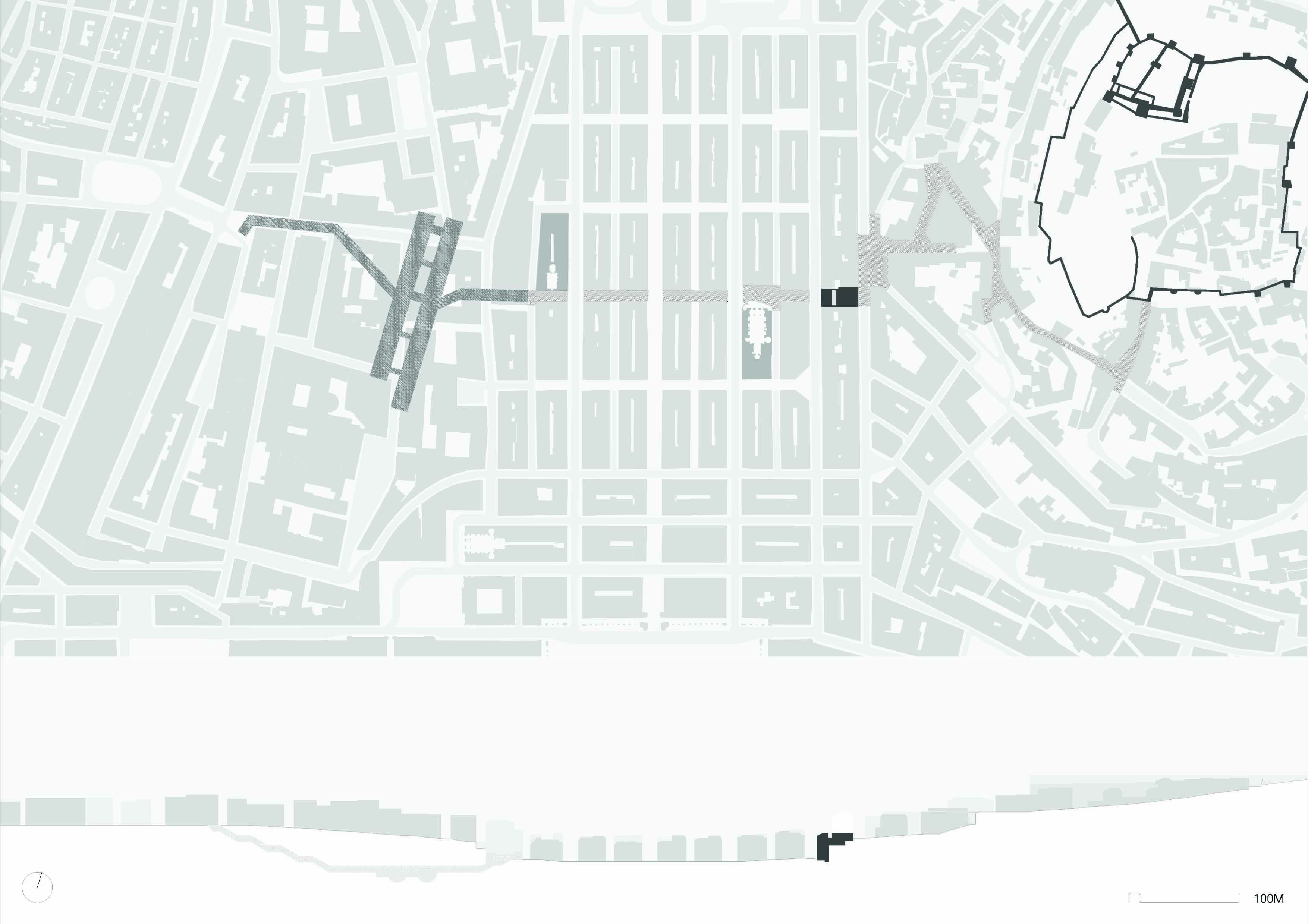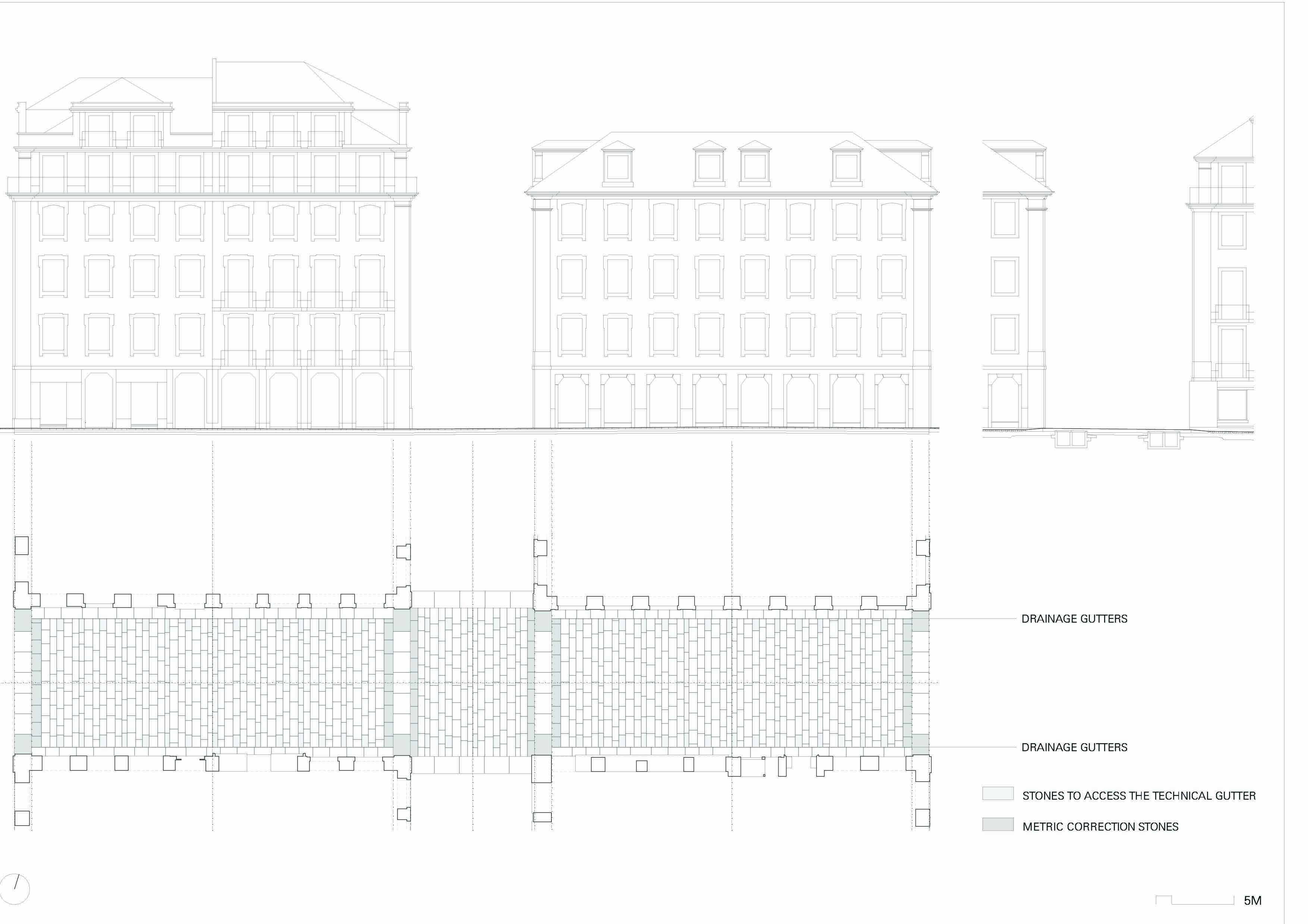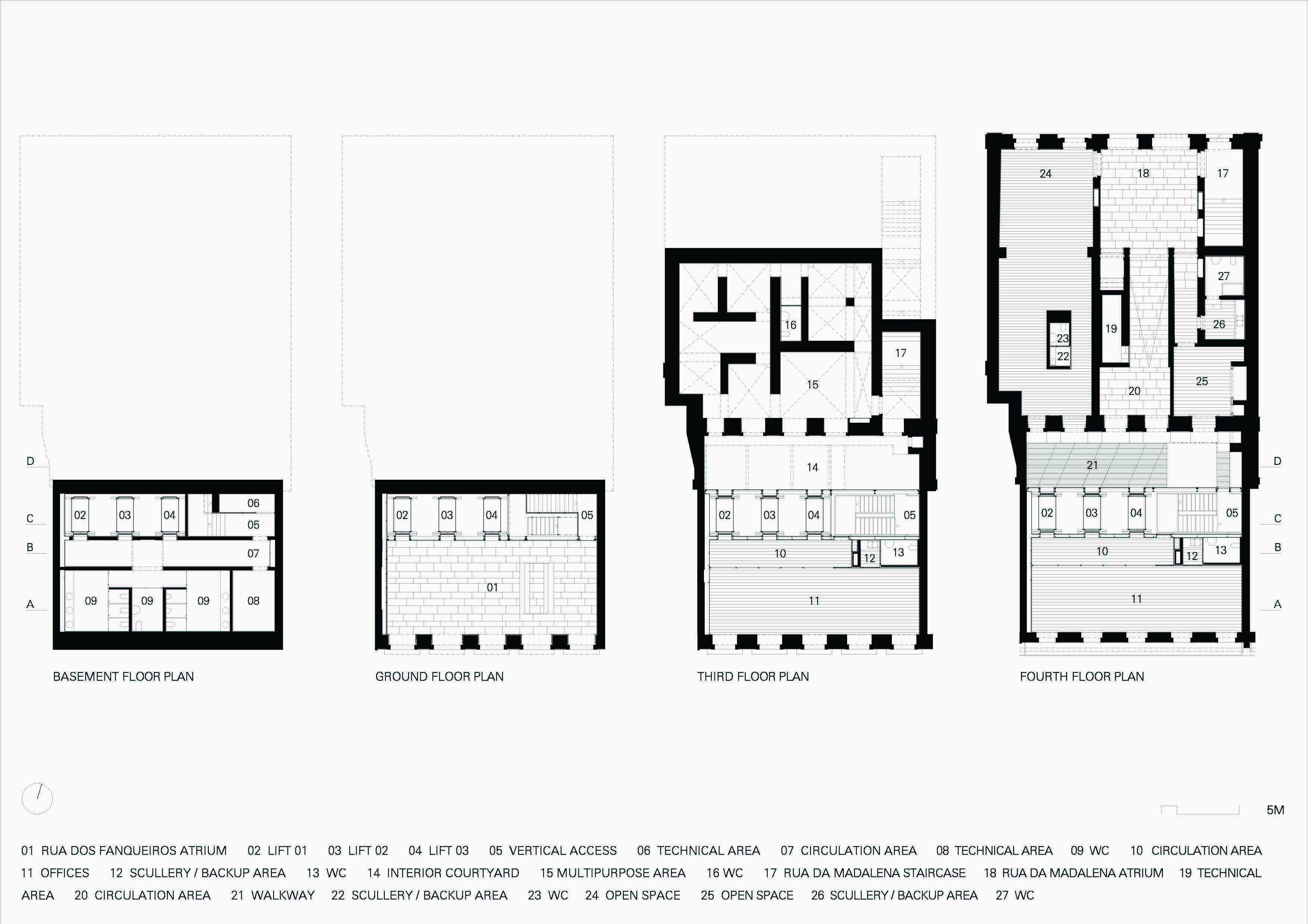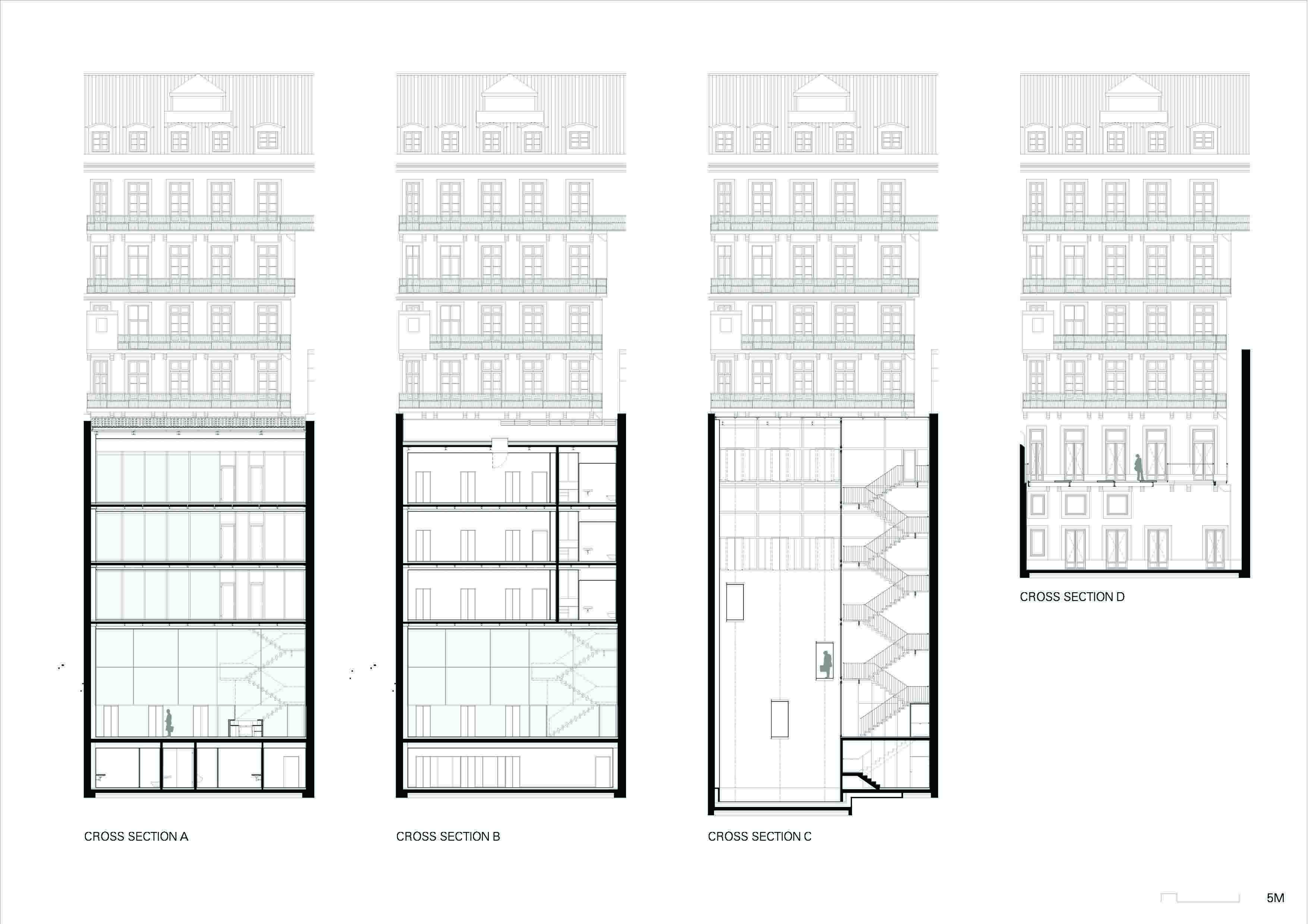12-14,
Walkway from the Baixa Pombalina to Castelo de São Jorge
The connection to the River Tagus, along orthogonal north–south axes, is the predominant feature of the organisation of Lisbon’s Baixa Pombalina district.
To the West, the Santa Justa elevator provides a mechanical connection between the higher-lying Chiado district and the low- level Baixa. The arrival of the Metro also brought a subterranean means of overcoming that di erence in height. However, projects for a mechanical connection between the Baixa and the hill on its eastern side remained in the drawer.
The Metro also enhanced the importance of Rua da Vitória as a means of crossing the Baixa district.
It was in this context that the plan to de ne an ‘assisted walkway from the Baixa to the Castle’ emerged, the objective of which was to link the various levels through an integrated strategy that not only facilitated the climb up the hill but also stimulated the revitalisation and regeneration of the surrounding areas.
The design includes a number of interventions: the urban regeneration of Rua da Vitória itself as the structuring axis for the route; the remodelling of building no. 170/178 in Rua dos Fanqueiros to house the public elevators; the urban regeneration of Largo Adelino Amaro da Costa, the surroundings of the Chão do Loureiro market building; and regeneration of the rest of the route up to the castle.
Functional continuity is emphasised by the use of a limited number of materials, respecting the logic of the urban spaces along the route in terms of scale, architecture and use of built structures, and delineating an easily identifiable route that prioritises comfort and accessibility for the pedestrian.
